Worker placement games are my favorite genre. I discovered Caylus in 2005 and was intrigued by the competition to get the most valued spots on the board, while factoring in the possibility of the bailiff sweeping them all away. The feeling of grabbing the last part of the castle while your opponent is left with a pile of useless resources was so much fun. Then, in 2008, I heard news of a groundbreaking game called Agricola and bought a copy. Eynat (my wife) and I played it for the first time that evening, and I fell in love with the game’s complexity and tension. The boundless variety that came from the occupation and minor improvement cards turned every session into a puzzle, except an adversary kept flushing your pieces down the toilet at the worst possible moments.
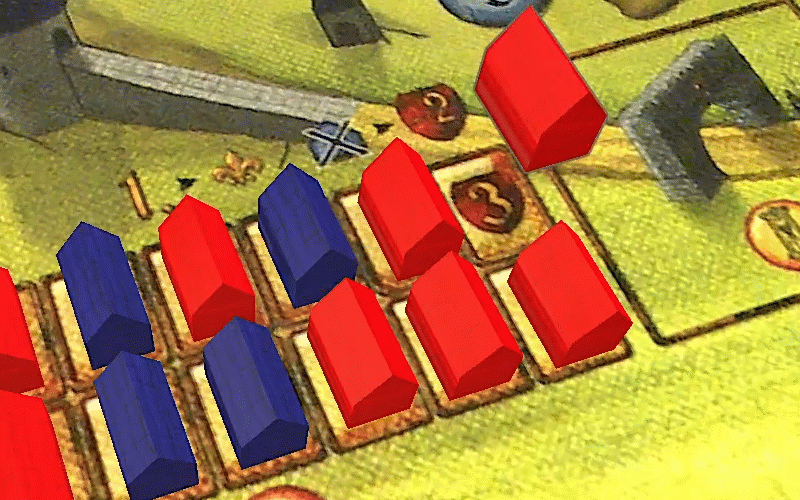
It was only natural to adopt the best of these games as I was designing Worldbreakers. The challenge is that Worldbreakers is not a worker-placement game. My main sources of mechanics inspiration were Netrunner and Magic: the Gathering. I was developing Worldbreakers as a board-control game with resource management and direct interaction via combat. Instead of taking the worker placement mechanics itself, I aimed to identify what I personally like the most about these games. I ended up with three elements which I find exciting.
Scarcity
Worker placement games never have enough resources. This is especially true when you factor in their inherent time limits. For example, in Fields of Arle, the endgame involves building Lütetsburg Castle for 3 bricks, 3 timber, and a whopping 15 food. This price feels absurdly far away when starting the game. In the first playthrough, you might manage to build the castle on the last turn, if at all. Similarly, in Agricola, The Well is a Major Improvement that costs 4 stone, a resource which only starts to slowly trickle halfway through the game. Furthermore, your big play is often missing just that one last resource. Figuring out the ebb and flow of resources is crucial.
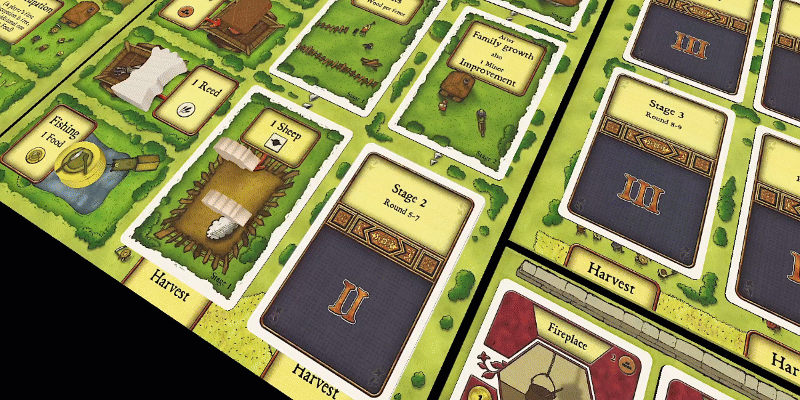
Sequencing
Sequencing is the allocation of workers in an order that gets the most out of each of them. The bottleneck in worker placement games is workers, and certain game actions become significantly stronger when you plan ahead. In Underwater Cities, one of the action spaces allows you to pay up to 3 science to upgrade that number of buildings. In order to get the maximum benefit from that space, you need to build up your board and resources accordingly. Another example comes from Caylus, where most point-generating buildings have two modes: an inefficient mode (one action + one gold for 5 points) or an efficient mode (one action + two gold for 9 points). Workers are at a premium, and you want to get the most out of each.
Timing
Your opponents are competing with you for the same actions. If you wait too long, they will occupy the space that you have been meticulously building towards. This is especially true if one of your opponents figures out the linchpin of your plan and counter-takes it. You develop the perfect sequencing to acquire the resources you need. Now you need to execute on it while your challengers are trying to get there themselves. This type of competition is similar to a game of chicken: you are pushing to take the best moves possible just one step ahead of your opponents, and vice versa.
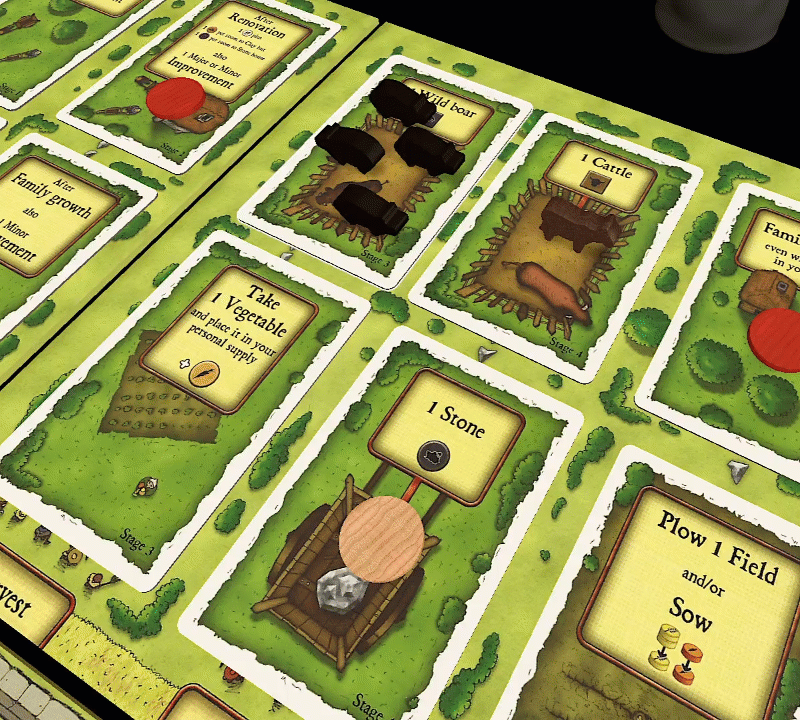
Bringing timing to Worldbreakers: The round tracker
From my perspective, timing ties scarcity and sequencing into the exciting puzzle that is the worker placement game. I wanted to start from that element, which led me to Worldbreakers’ round tracker.
In Worldbreakers, players alternate turns, each taking one turn for each of the four spaces on their side of the Round Tracker. A turn is composed of one action, such as gaining mythium (the game’s currency), playing a card, or attacking your opponent. This is the equivalent of placing a worker: you make a relatively humble move and your opponent immediately gets their chance to respond. This is different from Netrunner and Magic: the Gathering, where a whole turn is composed of multiple moves that are rarely interrupted. You can plan ahead, similarly to Chess, but must always factor in your opponent’s possible responses.
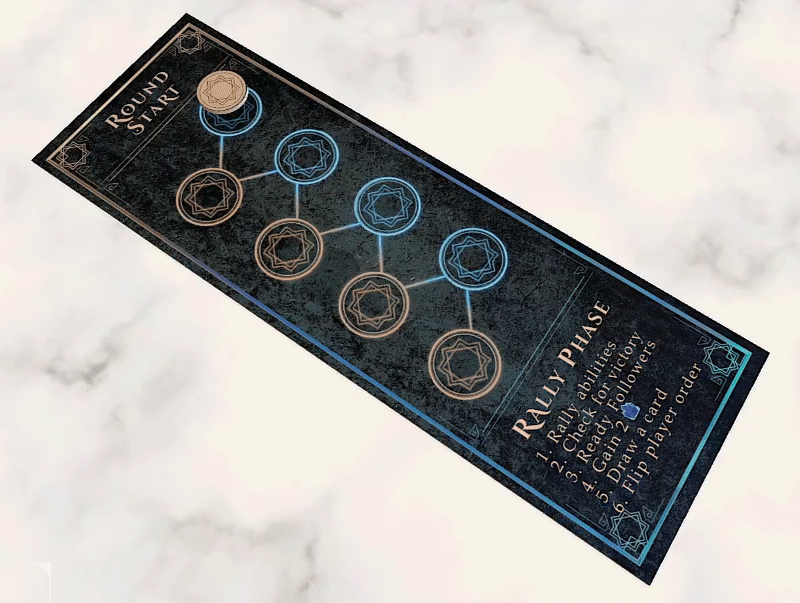
Once I put this pressure in place, the next step was to develop the different threads that tug on the player’s attention and create the scarcity and sequencing problems that they want to solve. Worldbreakers has several of them, and they vary based on your faction and deck construction. I would like to focus on two of them here: developing locations and attacking.
Worldbreakers is a race: The first player to reach 10 power wins the game. One way to gain power is through developing locations, cards which have multiple stages. In order to develop a location, you need to first play it, which requires an action. Once the location is in play, you can spend actions to develop its stage and trigger their effect, one action per stage. For example, to gain the full benefit of The Indigo Grotto, you will need to spend four actions (one for playing, then three for the three stages), or a whole round’s worth.
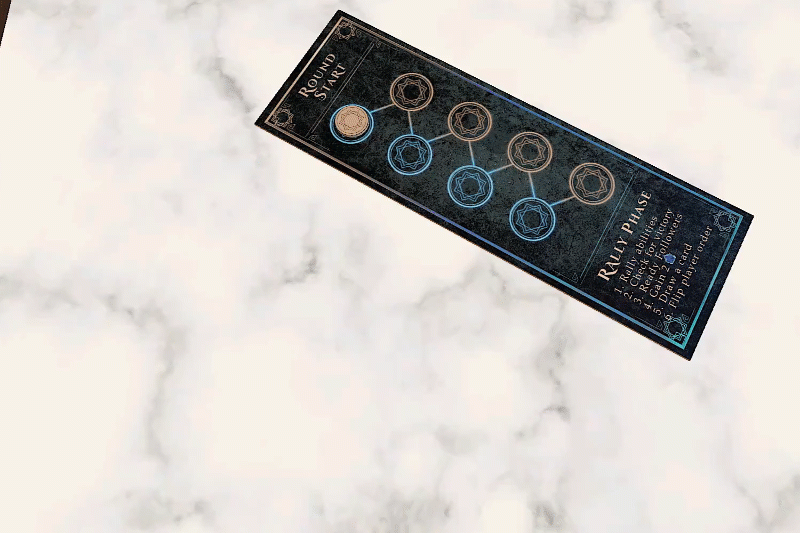
Remember that your opponent has a turn after each of your turns. One of the possible actions they can take is to attack. Attack involves exhausting (rotating) any number of followers. When your opponent attacks, you can choose to defend by sending your followers into the fray. Once the dust settles, if even a single attacker gets through, the attack is successful. One of the bounties of a successful attack is that your opponent damages your location, removing one of its precious stages without giving you the effect. This leads to an interesting dynamic: when you play your location, you should be prepared to stave off an oncoming attack. Furthermore, since getting the full benefit of a location requires multiple turns, you should stay mindful of future plays by your opponent that could lead to losing combat situations. We are back to the game of chicken, and to the worker-placement tension that I adore.
Thank you for reading! If you got this far, I am guessing that you are a board gaming fan. I would greatly appreciate it if you subscribe to my mailing list below for more design news. Also, if you want to try Worldbreakers, here is a two-minute introduction, plus the game is available for free on Tabletop Simulator. Join the Discord to learn more and to find people to play with.